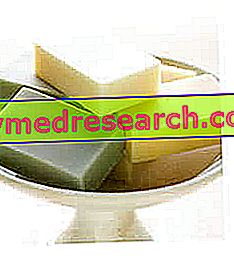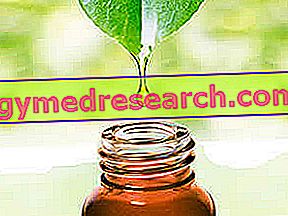
Classic soap (solid)
Classic soap can be considered an anionic surfactant. Chemically it is an alkaline salt of high molecular weight fatty acids (stearates, palmitates, oleate). The fatty acids used are generally obtained from vegetable oils and transfer their properties to the soap.

For example, Marseille soap is prepared mainly with olive oil, rich in oleic acid which forms soaps with excellent characteristics.
Disadvantages of Classic Soaps
The disadvantages in the use of classic soaps for body washing and, in particular of the hair, are:
- the alkaline pH caused by the excess of alkalis present, which can be a problem for the equilibrium of the weakly protective skin of the skin and of the intimate mucous membranes against bacterial attacks;
- the deposition on the skin and on the hair of the insoluble salts of the alkaline earth metals in the presence of hard waters, with consequent opacity and poor foaming.
syndet
To overcome the problem of the alkalinity of classical soaps, synthetic soaps ( Syndet ) or soaps not soaps are used more frequently today, a modern alternative to traditional solid soap.
They have more physiological acidity values, resulting more dermocompatible and not affected by the presence of hard water.
The syndets are mixed forms of surfactants, mainly anionic ones obtained without the saponification process, but which maintain the carboxylic functionality. In their formulation, next to a delicate cleansing base, constituted for example by acylglutamates or sulphosuccinates, can be included over-greasers such as lipids or lanolin derivatives, one or more plant extracts, waxes, perfumes and dyes. One of the advantages of syndets is to ensure greater stability to the perfumed essences that classic soaps did not allow.
Fluid cleaners
Fluid detergents include transparent, creamy and gelatinous liquid forms and are characterized by a mixture of surfactants with different characteristics (anionic, cationic, amphoteric), depending on the type of product, the place of application and the type of skin for which they are intended, in order to obtain a good compromise between washing performance and skin tolerability. The structure of a detergent is characterized by a primary surfactant, which is the basic element of the formulation and which generally has anionic characteristics, but which can be replaced, in more delicate products, with amphoteric and non-ionic surfactants. A secondary surfactant is almost always present, which serves to reduce the aggressiveness of the primary or to bring about improvements in terms of foaming or slenderness. To counteract the excessively delipidizing action of some types of surfactants, appropriate substances of a lipidic nature are often added, such as actual lipids or rendered hydrophilic by ethoxylation. In general, natural oils, synthetic esters and silicone derivatives are used, bearing in mind that their addition can limit foaming. In some cases there are rheological modifiers, such as salts, rubbers and acrylic polymers, to viscous the product and make it easier to escape from the container. In addition, we can find foam stabilizers, such as alkanolamides and amine oxides, pH correctors, perfume, preservatives and functional ingredients.
The problem of storing detergents is quite widespread and should be chosen with care. Interactions can occur between the surfactant and the preservative system, which can lead to the loss of activity of the latter: it is known, for example, that non-ionic surfactants can deactivate parabens. Among the most commonly used preservatives in detergent products we find, in addition to parabens, phenoxyethanol and the mixture of isothiazolinones, sorbic acid, benzoic acid and chlorhexidine. EDTA is frequently used as a chelator and because of its synergizing activity against preservative systems, while glycols, in particular propylene and butylene, glycerine and alcohol can be added to increase the transparency of the products.
The detergent products are mostly in fluid form and appear as transparent or creamy-pearly liquids. The items included under the tensiolite group are: shampoo, shower gel, shower gel, facial hand cleanser, intimate cleanser, foot baths and shaving products.



